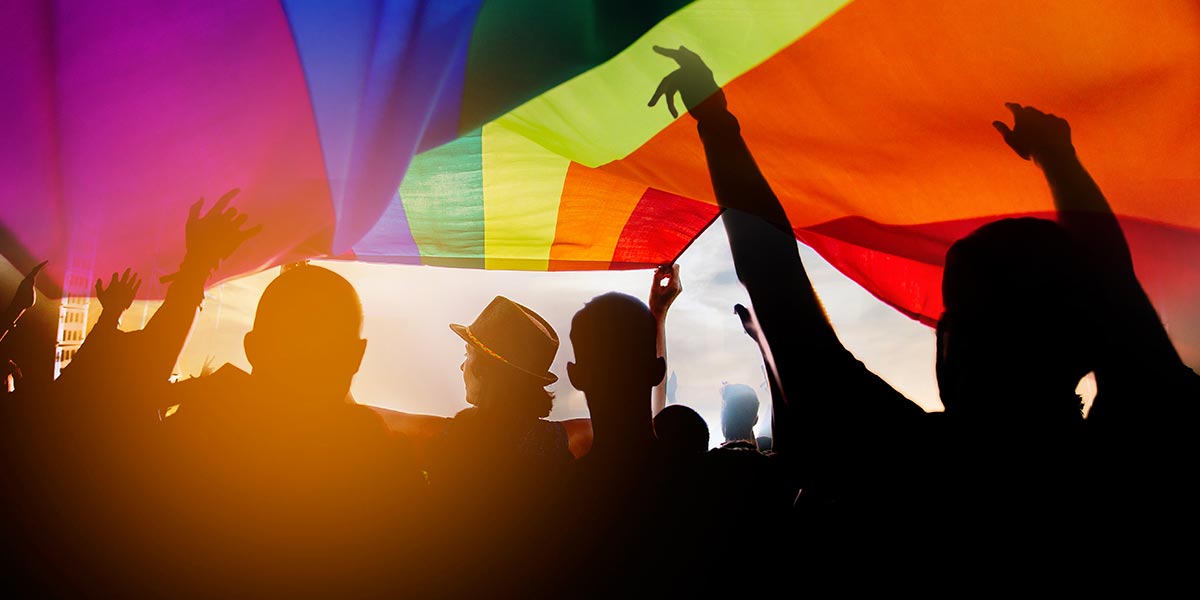Get to know your LGBTIQA+ alphabet

People – and even members who are part of the LGBTIQA+ community themselves – often talk in jest about the seemingly confusing umbrella acronym for people who do not identify as entirely straight.
In fact, the encompassing shorthand – albeit quite a long string of letters that now officially reads “LGBTQQIAAP” – has evolved over the years to try and be more inclusive, and might even expand to include more sexual identities and orientations in the future.
While you practice the official acronym so you can get it right the next time people joke about it, let’s break down the meaning behind each letter of the current, most commonly used LGBTQIA+ alphabet.
L is for lesbian, G is for gay, B’s for bisexual
You’re probably already quite familiar with these, which also formed the standard acronym for the community until the late 1980s. These first three letters refer to how people identify with regard to their sexual attraction or sexual orientation. Gay and lesbian people tend to be primarily or only attracted to members of the same sex, while bisexual people may be attracted to both female and male partners.
T is for transgender
When LGB became LGBT at the advent of the 1990s, gender identity also became a part of the defining qualities of the queer community. For most transgender people, their sense of personal identity and gender does not correspond with the sex they were assigned to at birth. This may mean that a person, for example, was identified as male at birth, (and has the traditional sexual organs and body appearance associated with being male), but they may feel and identify as female instead. Some transgender people may choose to change their body and appearance through hormones or surgery to align it with their true gender identity, while some may not.
Q is for queer or questioning
Traditionally considered a derogatory term, the word “queer” has been embraced and taken back by the community. Today, queer can refer to gender fluidity, or may simply be used by people who prefer not using typical sexual identity labels like gay, lesbian or bisexual. It is often used as an umbrella term for anyone who is part of the LGBTIQA+ community or by someone who feels like they don’t fit into the mainstream. The “Q” can also stand for questioning, which refers to members of the community who are still exploring gender identity or sexuality.
I is for intersex
People who are a part of the intersex community are born with sexual or reproductive anatomy that does not necessarily fit in with traditional or typical binary definitions of female or male. There are many variations and degrees of being intersex. Globally, experts estimate that intersex people constitute 0.05 to 1.7% of the total population. There remains huge controversy about practices that involve inflicting “normalising” surgery on intersex babies or children to make their bodies fit one or the other gender binary. The decision to have surgery or not should be left up the person to decide when they are old enough to do so.
A is for asexual or ally
The straight and cisgender allies of the LGBTQIA+ community have been, and still are instrumental in helping to secure the rights of the people whose cause is also theirs, but the additional “A” in the acronym may also refer to people who identify as asexual. Asexual people do not experience sexual attraction toward any gender, although they may still want romantic relationships and can be attracted to people in other ways.
P is for pansexual
Whatever their own gender identity or sexual orientation, pansexual people are not bound by gender, gender identity or biological sex when it comes to attraction, and may be emotionally, romantically or sexually attracted to people of any gender or gender identity.
+ is for inclusivity
When used in the media today, the most commonly used comprehensive acronym is LGBTQIA+, which condenses the term into something shorter and easier to remember, with the “+” added to include the identity of anyone from related communities who doesn’t fall under the other letters.
As our understanding of sexuality and gender expands even further, it is very likely that other letters will continuously be added to which has now become one of the most recognised and widely used terms for the queer community. Sure, it’s long already, but isn’t this a community that is, at its heart, all about making the circle bigger?
LGBT yes, the gay flag yes. Having half the alphabet no thank you it is confusing and straight people rightfully think it is a joke.
Same for the flag, I loved that every one can have their own flag and every one can at the same time share rainbow LGBT flag. New LGBT flag with more rainbow colours no thank you! I will stick with the real flag not some snowflake imitation.
But I guess every should do what makes them feel happy.